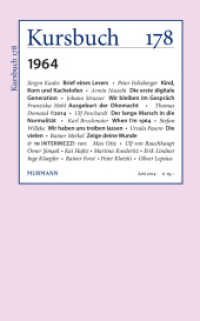- ホーム
- > 洋書
- > 英文書
- > Science / Mathematics
Full Description
By means of our present models of visuomotor coordination and its modulation by state-dependent inputs, we are just beginning to simulate and analyze how external information is represented within different brain structures and how these structures use these operations to control adaptive behavior.






